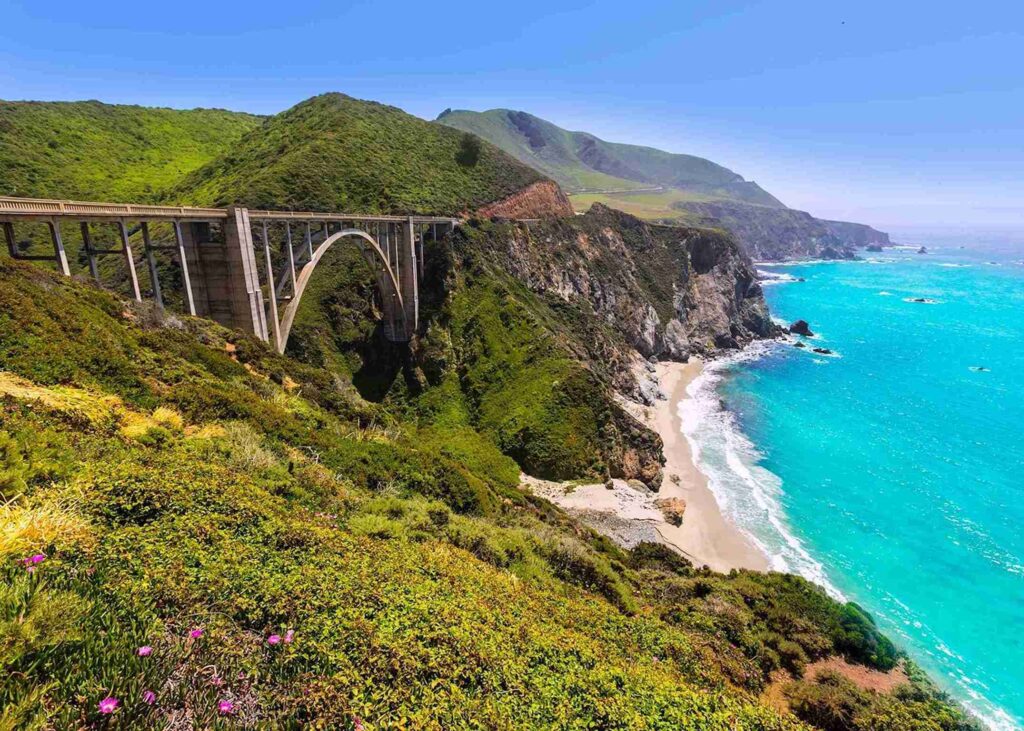Big Sur, USA travel tips
Category
Categories
Popular Articles

Overview of the Destination:
Big Sur is a rugged and mountainous section of the Central Coast of California, USA, between Carmel Highlands and San Simeon. It’s famed for its dramatic scenery. The breathtaking cliffs, mystical fog, towering redwoods, and expansive views of the Pacific Ocean make it worthwhile for visitors. It’s known for iconic landmarks such as the Bixby Bridge and McWay Falls, and its natural beauty has inspired countless musicians, writers, and artists.
Best Time to Visit:
October to April provides the ideal weather conditions in Big Sur. Summers (June to August) are busy with tourists, making the shoulder season (late spring or early fall) ideal to avoid crowds. ‘Big Sur International Marathon’ in April and ‘Big Sur Folk Festival’ in September are two significant events worth planning your visit around.
Climate & What to Pack:
Big Sur has a Mediterranean-type climate, meaning it’s mostly warm and dry in the summer and mild in the winter. However, the weather can change rapidly, so pack layers. Don’t forget comfortable hiking shoes, a wide-brimmed hat, sunscreen, a water bottle, and binoculars for bird or whale watching. A light raincoat might also come in handy.
Getting There:
The closest major airports to Big Sur are in Monterey, San Jose, and San Francisco. From there, you can take a bus or a taxi, or rent a car to reach Big Sur. As it’s in the USA, there are no specific visa or entry requirements for visiting Big Sur, other than the normal requirement for entering the United States.
Getting Around Locally:
Big Sur is best explored by car for flexibility and access to all the remote natural attractions. Bicycle rentals are also available for those preferring an eco-friendlier travel mode. Public transportation options are limited.
Safety Tips:
Big Sur is generally a safe area. However, like any wilderness area, take precautions. Beware of fast-changing weather conditions, especially while hiking. Always stay on marked trails. Solo travelers should inform someone of their plans before heading off on long hikes.
Top Things to Do & See:
Apart from the famous Bixby Bridge and McWay Falls, don’t miss out on hiking in Pfeiffer Big Sur State Park, visiting the Point Sur Lighthouse, and exploring the Henry Miller Memorial Library. For a unique experience, soak in the cliffside hot springs at the Esalen Institute at midnight.
Where to Stay:
There are many options for stays in Big Sur, including luxury resorts such as Post Ranch Inn, mid-range hotels like Big Sur River Inn, and budget campsites in state parks. Most accommodation provides a stunning view of the ocean or redwood forests.
Food & Local Cuisine:
The cuisine in Big Sur is a blend of American classics and fresh ocean catches. Nepenthe Restaurant is popular for its Ambrosiaburger. For hearty American breakfast and freshly baked items, try Big Sur Bakery. There are no specific dining etiquettes here—just enjoy the meal with the view.
Cultural & Practical Tips:
The currency used is US dollars and English is the common language. US tipping culture generally expects 15-20% on dining. As for plugs, the standard voltage is 120 V. Free WiFi access is relatively easy to find in cafes and hotels.
Sustainable or Responsible Travel Tips:
Stay on marked trails to avoid damaging sensitive habitats, do not feed wildlife, and adhere strictly to all “No Fire” indicators. Pack out what you pack in to keep the region pristine.
Personal Travel Tip:
The drive through Big Sur along Highway 1 is as breathtaking as the destination itself. Take your time, pull over at viewpoints, and let the incredible beauty of this coastline seep into your soul.










